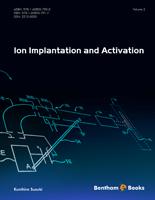In recent years, two concepts: metamaterials/left-handed materials/negative refraction, and plasmonics, appeared as emerging sciences and technology in optics. Based on the exponential increase in the number of published papers every year, it is clear that we are at the eve of a new revolution that will impact many fields of science and technology, including photonics, computation, communication, biology, medicine, materials science, physics, chemistry, and photovoltaics. The book truly reflects the present status of this rapidly developing area of science and technology and highlights some of the important historic developments. Most of the chapters discuss ongoing scientific research, and promising future directions are identified.
Subwavelength optics, defined by the fusion of microfabrication and nanotechnology as well as near-field optics and nanophotonics, is an emerging frontier providing challenges for fundamental research and opportunities for new technologies. Subwavelength optics has already made its impact in the marketplace. It is a multidisciplinary field, creating opportunities in physics, chemistry, applied sciences, engineering, and biology, as well as in biomedical technology. However, a few nano-optics relevant books involve micro-/nanofabrication technologies and characterizations for manufacturing near-filed optical components, nanophotonic devices, and plasmonic structures so far. Combining my ten years hands-on experiences on micro-/nanofabrication technologies which were applied in the fields of micro- and nano-optics, plasmonics, and nanophotonics, I collected and edited the fabrication issues systematically with respect to subwavelength optics from theory to technology.
Subwavelength optics has meant different things to different people, in each case being defined with a narrow focus. Several books and reviews that exist cover selective aspects of subwavelength optics. However, there is a need for an up-to-date monograph that provides a unified synthesis and systematization of this subject. This book fills this need by providing a unifying, multifaceted description of subwavelength optics to benefit a multidisciplinary readership. Relevant fundamental theory, structures design, micro/nanofabrication, and characterization as well as applications surrounding subwavelength optics are systematically described in this book. The objective is to provide a basic knowledge of a broad range of topics so that individuals in all disciplines can rapidly acquire the minimal necessary background for research and development in subwavelength optics. The author intends this book to serve both as a textbook for education and training as well as a reference book that aids research and development in those areas integrating light, photonics, nanotechnology, semiconductor, chemistry, and biology. Another aim of the book is to stimulate the interest of researchers, industries, and business to foster collaboration through multidisciplinary programs in this frontier science, leading to development and transition of the resulting technology.
This book encompasses the fundamentals and various applications involving the integration of microfabrication, nanotechnology, photonics, semiconductor, materials, chemistry, and biology. Each chapter begins with an introduction describing literature review of the contents in the chapter and what a reader will find in that chapter. Each chapter ends with a brief summary and may serve as a review of the materials presented.
In writing this book, which covers a very broad range of topics, I received help from a large number of individuals at the Institute of Optics and Electronics, Chinese Academy of Sciences, University of Electronic Science and Technology of China, and Sichuan University. This help consisted of furnishing technical information, creating illustrations, providing critiques, and preparing the manuscript. A separate Acknowledgement recognizes these individuals.
Here I would like to acknowledge the individuals whose broad-based support has been of paramount value in completing the book. I owe a great deal of sincere gratitude to my wife, Di Zhang. She has been a constant source of inspiration, providing support and encouragement for this writing. As a perfect wife, she has bravely undertaken heavy burden of our family in overseas and looked after my son. There will be no my success without her sacrifice and great contribution to the family. I am also indebted to our son, Wenzhe Fu, for showing his love and understanding by sacrificing his quality time with me.
I express my sincere appreciation to Dr. Haofei Shi and Dr. Xuefeng Yang for reviewing Section 3-2 of Chapter 3. Finally, I thank Mr. Yu Liu, whose clerical help in manuscript preparation was invaluable.
Yongqi Fu
In Vancouver
Feb. 2009





